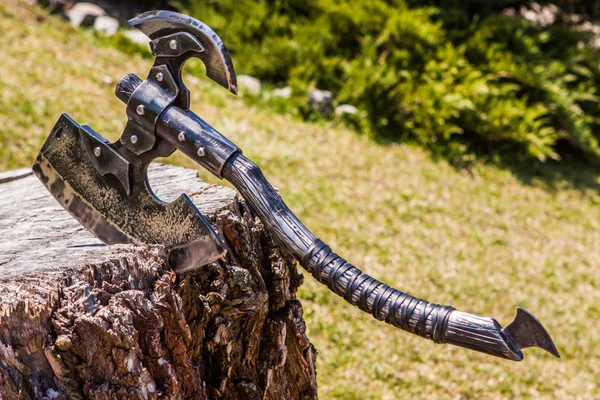In the modern age of advanced technology and mass production, one might think that hand-forged axes have become obsolete relics of the past. However, surprisingly, these age-old tools have found unique and unexpected uses that showcase their enduring relevance and versatility. One notable application of hand-forged axes in the contemporary world is their integration into the world of art and craftsmanship. Artisans and blacksmiths, recognizing the beauty and authenticity of hand-crafted tools, have revived the art of axe-making and elevated it to a form of artistic expression. These master craftsmen create exquisite axes, often incorporating intricate designs and patterns on the blade and handle. These finely crafted pieces find their place as decorative items in homes, museums, and galleries, captivating both history enthusiasts and modern art lovers alike. The fusion of traditional blacksmithing techniques with contemporary aesthetics has given rise to a niche market for hand-forged axes as unique pieces of functional art.
Moreover, hand-forged axes have also found surprising utility in the realm of sustainable living and environmental conservation. As the world faces increasing concerns about deforestation and carbon footprints, responsible land management has gained traction. In certain regions, selective logging and sustainable forestry practices have been adopted as means to minimize ecological impact while still obtaining necessary resources. Hand-forged axes, with their precise and controlled cutting abilities, play a crucial role in this eco-friendly approach. Their ability to make precise cuts enables loggers to carefully select trees for removal, thus promoting the growth and preservation of healthier forests.

Beyond the artistic and ecological applications, hand-forged axes have also become a symbol of craftsmanship and heritage in the world of outdoor enthusiasts. In an era where mass-produced gear floods the market, adventurers and survivalists seek gear that reflects authenticity and durability and vikingska sekera, with their unique patterns and individually forged blades, offer unparalleled quality and craftsmanship. Outdoor enthusiasts cherish these axes not only for their functionality in camping, bushcraft, and survival scenarios but also for the sense of connection they bring to the history of human exploration and survival.
In surprising turn of events, hand-forged axes have even made their way into the culinary world. Renowned chefs and cooking enthusiasts have embraced these ancient tools to enhance their culinary experiences. Employed as unique serving pieces for dishes like grilled meats and vegetables, hand-forged axes add an element of rustic elegance to dining presentations. Some chefs have even taken it a step further, using the sharp precision of the axes to finely chop herbs and other ingredients, a task previously reserved for kitchen knives. This innovative integration of traditional blacksmithing and haute cuisine demonstrates the versatility of these age-old tools. From functional art pieces and sustainable forestry tools to symbols of craftsmanship and even kitchen utensils, these traditional tools have found a place in various unexpected spheres of modern life. As long as there are individuals who value authenticity, heritage, and quality, hand-forged axes will continue to endure and surprise us with their diverse and meaningful applications.